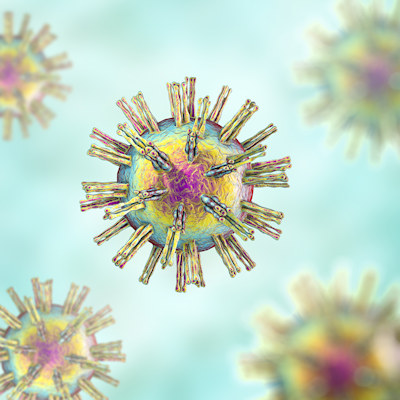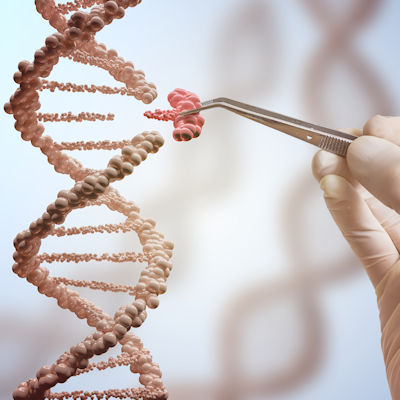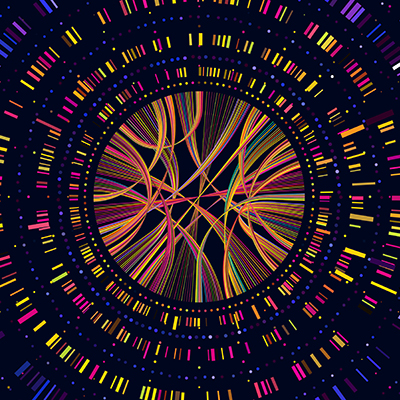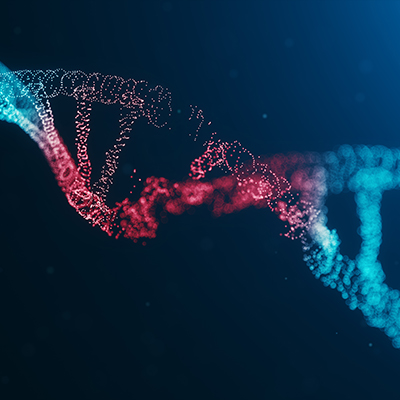September 9, 2020 -- A new technique will help scientists choose the best available gene-editing option for any given indication, making CRISPR technology safer, cheaper, and more effective. The tool is outlined in a September 7 article in Nature Biotechnology.
Genome editing approaches that use technologies like clustered regularly interspaced short palindromic repeats (CRISPR) and CRISPR-associated protein 9 (CRISPR-Cas9) have tremendous potential to improve outcomes for a variety of health conditions. Originally adapted from a naturally occurring genome-editing system in bacteria, CRISPR allows researchers to target specific sequences of DNA with guide RNA.
This guide RNA also binds to CRISPR-associated (Cas) nucleases, which altogether form an R-loop that activates the nuclease domain to cut or cleave both strands of the target DNA. Once cut, the cell's own repair machinery is used to add, delete, or replace genetic material.
Off-target sites that are complementary to the guide RNA can also activate Cas nucleases, leading to unanticipated (and often undesirable) mutations, large-scale deletions, and chromosomal rearrangements outside of target DNA sequences.
One of the most common types of Cas nucleases is Streptococcus pyogenes Cas9, abbreviated SpCas9, which is prone to these off-target effects. Another Cas variant, Cas12a, cleaves fewer off-targets than SpCas9. These specificities are currently inferred from DNA break repair scars at on- and off-target genomic sites. Importantly, this methodology cannot differentiate enzyme-specific parameters from other factors such as delivery method, exposure time, or DNA repair pathways.
To improve on the current understanding of accuracy and effectiveness of different Cas nucleases in the context of CRISPR-Cas systems, researchers from the University of Texas at Austin, the University of California, Berkeley, and Korea University developed NucleaSeq. The tool enables rapid, quantitative, and systematic comparisons of specificity and cleavage outcomes across natural and engineered nucleases.
"We designed a new method that tests the specificity of these different CRISPR enzymes -- how precise they are -- robustly against any changes to the DNA sequence that could misdirect them, and in a cleaner way than has ever been done before," said co-author Steve Jones, PhD, University of Texas research scientist.
Benchmarking CRISPR nucleases
NucleaSeq is a nuclease digestion and deep sequencing technique, a parallel platform that measures the cleavage kinetics and time-resolved cleavage products for over 10,000 targets containing mismatches, insertions, and deletions relative to various guide RNAs. Nuclease binding specificities are measured on repurposed next-generation sequencing (NGS) MiSeq chips via a chip-hybridized associated mapping platform (CHAMP).
The researchers evaluated five SpCas9 variants and Cas12a for DNAs containing guide RNA-relative mismatches, insertions, and deletions. Then, they used the data to train and develop a biophysical model that provides a quantitative framework for comparing CRISPR nucleases to reveal mechanistic insights into off-target cleavage.
"It's like a standardized test," explained John Hawkins, a PhD alumnus of the Oden Institute for Computational Engineering and Sciences at the University of Texas at Austin. "Every student gets the same test, and now you have a benchmark to compare them."
Insights into off-target cleavage
They found that engineered Cas9s increase cleavage specificity but not binding specificity. The improved kinetic discrimination likely results from slowing R-loop propagation rates (slowing the rate-limiting step) thereby increasing cleavage specificity.
Surprisingly, Cas12a cleaves with similar specificity to wildtype Cas9 in vitro, despite its higher specificity in cells. This may be explained by Cas12a's slower cleavage rates which allow time for cellular enzymes to displace (correct) it from off-targets. The authors suggested that Cas12a could be a strong candidate for applications that require high target-binding specificity.
Guide RNA affects binding, cleavage, and trimming by several nonexclusive mechanisms. Using NucleaSeq with differentially active guide RNAs can improve guide RNA selection models by helping researchers understand differential mechanisms and on-target performance. The tool can inform both target and nuclease selection for specific applications and help improve off-target prediction algorithms.
"This technique gives us a new way to reduce risk," Jones said. "It allows gene edits to be more predictable."
Do you have a unique perspective on your research related to synthetic biology? Contact the editor today to learn more.
Copyright © 2020 scienceboard.net










